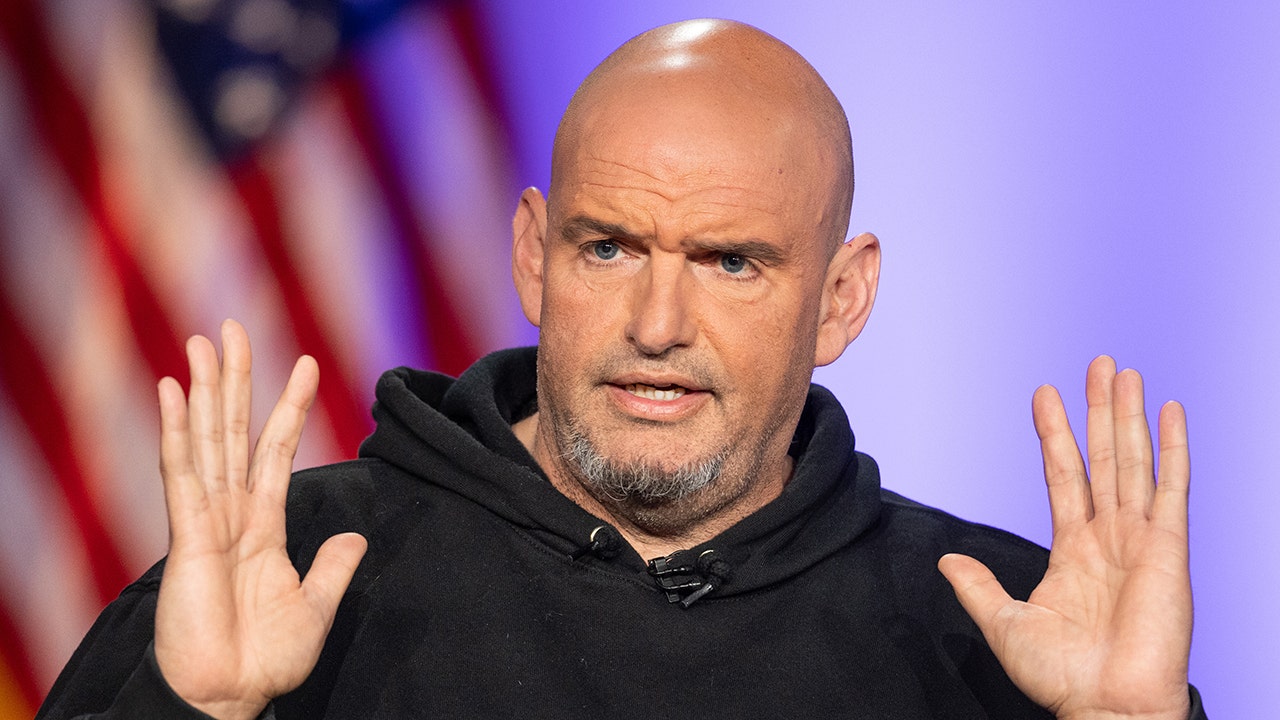Lifestyle
How to have the best Sunday in L.A., according to MC Lyte

The thing that first brought MC Lyte to Los Angeles? New York’s historic Blizzard of 1996.
“I always said I wasn’t going to do another winter in New York, but then when that snowstorm happened I was like, ‘Oh my God. I gotta get out of here,’” the Brooklyn native recalls.
In Sunday Funday, L.A. people give us a play-by-play of their ideal Sunday around town. Find ideas and inspiration on where to go, what to eat and how to enjoy life on the weekends.
The hip-hop legend — the first Grammy-nominated female rapper — also had her sights set on pursuing an acting and voice-over career in Hollywood. She’s since hosted several awards shows and starred in TV shows and films like “Girls Trip,” “S.W.A.T.” and “New York Undercover.”
She still visits her beloved hometown on a regular basis, but says “L.A. to me is an easier way of life and it also allows me to be a little bit more introspective” and enjoy the outdoors.
This year has been a particularly celebratory — and busy — one for MC Lyte as she’s been celebrating the 50th anniversary of hip-hop music. In August, MC Lyte was featured in the Netflix series “Ladies First: A Story of Women in Hip-Hop,” on which she is also an executive producer. The four-part documentary, which was produced by Culture House Media, explores the often overlooked role that women have, and still play, in the genre.
“What it means to me is everything because I’m always trying to a shine the light on newcomers as well as those who have been around for a long time,” says MC Lyte, who also celebrated the 35th birthday of her debut album, “Lyte as a Rock,” this year.
On the Sundays when MC Lyte hasn’t been traveling all weekend, she likes to pick up a cortado from one of her favorite coffee shops, go on a bike ride and listen to reggae music at the beach. Here, she takes us along on her perfect Sunday in L.A.
This interview has been lightly edited and condensed for length and clarity.
7 a.m.: Rise early and pick up a cortado
On the perfect Sunday, I’m probably waking up at 7 a.m. I like to get out before the sun really makes its move because it reminds me of home. I love the feeling of being out before everyone else is or being up at least. I’d visit a coffee shop called Games N Grounds, which I really love. It’s also a game store, so you can play all different types of games. They sell board games and all sorts of card games, and things of that nature. I love the community feel of that place, so I usually go there, get a cortado or a latte if I’m feeling really frisky with the extra milk. I’d probably take my drink to go and go for a drive.
9 a.m.: Hop on a bike at the beach and explore, then get tacos
I’d drive to Santa Monica beach and rent a bike, then go past Venice to Marina Del Rey. There’s a cute little Mexican spot there called Cabo Cantina that I like to get tacos and chill out there for a minute. I also like to get chips and fresh guacamole. I love the chicken and steak fajita. I’m a combo fajita girl with corn tortillas — I try to stick with if I can and then maybe a margarita. I’m a great people watcher when people are not watching me [laughs].
2 p.m.: Post up at the beach and listen to reggae
Then I’d probably get on my bike and go through a couple of streets and look at the homes because I love architecture and design. Then I may call up a friend. It depends on whether I feel like talking or listening, and if I’m not in that mood, I’ll just take a seat right there on the beach or on a bench and watch the sun go down.
If it’s my perfect Sunday though and it’s an imaginary world, I would put a reggae band down there at the beach. Reggae music definitely takes me back home to being much younger and surrounded by so much culture. It also reminds me of just being on an island, which is always relaxing to me. It was probably one of the first genres that I became acquainted with outside of my home. You know you spend all these years being influenced by the music that your parents listened to or your older family listens to, and then finally, you get to break out and say “I like this. I want to listen to this” and that was reggae for me. So it represents independence. It represents a flow, laid back, easiness [and] laying all your cares down.
6 p.m.: Dinner at Cafe Gratitude
With a ride like that, I’d probably end it off with some more food. If I’m down in that Venice/Marina Del Rey area, I might go to Cafe Gratitude in Venice. They have so many good things on the menu. The cauliflower there, I really, really love and they have so many bowls that I get into. I like the “I Am Loving” bowl.
7 p.m. Relax at Rafi Lounge (and return rental bike)
After that, I might visit my friend Rafi’s place — it’s called Rafi Lounge. It’s on PCH, across from Nobu and the Soho House. It’s just a really chill place to be. Great vibe. Usually they have some type of programming, whether it’s a band or meditation. It’s something easy so that I don’t really have to jump into the Sunday traffic to get back home.
8:30 p.m. Drive home to some oldies and take a bubble bath
I have a lot approaching on Monday, so I’d probably ride back home to some Isley [Brothers] — the best of — or Earth, Wind and Fire, something that kind of connects me to home, family and safety. Then maybe take a bubble bath and get into bed. On an ideal Sunday, I’d like to be in bed by 9:30 p.m.

Lifestyle
Take a peek at Stephen Sondheim's papers, now at the Library of Congress

More than 5,000 items from composer/lyricist Stephen Sondheim, including lyric and music sketches and unpublished scripts, are now housed in the Library of Congress.
Shawn Miller/Library of Congress, Stephen Sondheim Collection, Music Division
hide caption
toggle caption
Shawn Miller/Library of Congress, Stephen Sondheim Collection, Music Division
When Mark Eden Horowitz, a senior music specialist at the Library of Congress, created a show-and-tell of the Library’s music collection for Broadway legend Stephen Sondheim back in May of 1993, he wasn’t expecting to prompt tears.
He’d filled a room with some of the Library’s millions of music-related items – ones he thought might strike a chord with the composer-lyricist widely credited with bringing sophistication and artistry to the American musical. They included manuscripts from Sondheim’s mentor and fellow lyricist Oscar Hammerstein II and his music teacher and fellow composer Milton Babbitt; scores by composers Béla Bartók, Aaron Copland, Johannes Brahms; items from West Side Story and other shows on which Sondheim had collaborated.
Each was a jewel of the Library’s collections, but there was one crown jewel.
“When I brought out Gershwin’s manuscript for Porgy and Bess, he cried,” remembers Horowitz.
Within weeks, Sondheim let Horowitz know he was bequeathing his papers to the Library of Congress. And the importance of protecting them came into sharp relief when a fire broke out in Sondheim’s home less than two years later. It started in Sondheim’s home office, where the papers were stored in cardboard boxes on wooden shelves.
“It’s the closest in my life I’ve ever come to seeing an actual miracle,” says Horowitz. “There’s no reason why these manuscripts should not have gone up in flames — paper in cardboard on wood, feet from a fire that melted CDs. It truly is miraculous.”

Composer and lyricist Stephen Sondheim in 1976.
Associated Press
hide caption
toggle caption
Associated Press
Now that the papers — more than 5,000 items including lyric and music sketches, scores, unpublished scripts, and all sorts of miscellany — are safe in the Library’s collection, Horowitz says he’s forever being surprised by them even though he knows Sondheim’s work well. He taped hours of interviews with the Broadway composer, which became a book called Sondheim on Music: Minor Details and Major Decisions. That subtitle is a riff on a lyric in a song from Sunday in the Park with George. Horowitz says that sifting through the collection has reminded him that Sondheim really meant another lyric in that song: “Art isn’t easy.”


“I’m appreciating in a way I never had before how much effort he put into everything,” he says. “Just page after page after page …”
He pulls out a thick folder containing 40 pages of lyric sketches for a single song — “A Little Priest” from Sweeney Todd — his show about a barber who slits his customers’ throats and a baker who has the bright idea of baking them into meat pies.
It’s a song rife with rhyme and 31 variously tasty victims, but Horowitz points out that there are many, many more in the lyric sketches (scribe, cook, page, farmer, baker, driver, gigolo, mason, student) that didn’t make it into the song. “I added them up, and there were 158 that he’d considered.”
He thumbs through the sketches, scribbled in longhand using Blackwing pencils on 8 ½ x 14” lined, yellow legal pads, for one particular abandoned couplet – “everybody shaves except rabbis and riff-raff.”
“I just love the fact that he came up with that.”

The Library of Congress’ new Stephen Sondheim collection includes many pages of lyric sketches for the song “A Little Priest” from the musical Sweeney Todd. In his notes, Sondheim brainstormed dozens of potentially tasty victims for the demon barber of fleet street, most of whom never made it into the song.
Shawn Miller/Library of Congress, Stephen Sondheim Collection, Music Division
hide caption
toggle caption
Shawn Miller/Library of Congress, Stephen Sondheim Collection, Music Division
Next, Horowitz pulls out sheet music where these lyric sketches are written more formally as actual lyrics. But this is still an interim step, before a final piano score of the song, followed by page after page of typescripts of lyrics.
“In theory the song is done, but he’s still working on it,” marvels Horowitz, “and modifying it and changing a single word or a phrase. It’s the perspiration behind the inspiration.”
“I mean here,” he says, pointing to a line handwritten on a typed lyric sheet, “he’s written in ‘we have some shepherd’s pie peppered with actual shepherd‘ — one of the great lines, but he’s inserting it. He never let them go until the show opened, or sometimes even after they opened. Always trying to perfect things.”
That’s a habit his papers suggest Sondheim developed at the start. There are tantalizing hints of his thought processes going all the way back to his high school musical, By George, which he wrote while attending George School, a Quaker boarding school in Bucks County, Pa., in 1946.
The program lists 21 songs, including “Meet You at the Donut,” “Puppy Love,” and “Wallflower’s Waltz.”
The papers also include a piano sonata he wrote in college, a song he sent unsolicited to Judy Garland, a personal birthday tune he penned as a premium for a PBS fundraiser, a treatment for Breakdown, a play, or maybe a TV show that he wrote with Larry Gelbart, his A Funny Thing Happened on the Way to the Forum collaborator, and lots of other miscellany including a “humming song.”
All of this will doubtless be grist for many a doctoral dissertation. As will a remarkable internal monologue — never spoken or sung — that he penned for Glynis Johns, the leading lady in A Little Night Music. It’s for the scene where she sings the most popular song Sondheim ever wrote: “Send in the Clowns” — two pages of stream of consciousness for the actress about what her character is thinking and feeling. One page is what she’s trying to communicate in the scene to her unhappily married longtime lover. The other is what she’s thinking to herself.
Here’s a bit of what she wants her lover to realize: “I’ll tell you why you’re here: You have an awkward feeling because you don’t know you’re trapped. You think you’ve made your bed and you have to lie in it. The hardest human thing to do is sever a relationship. I can’t fire my accountant. Also, you like to suffer which we all have a capacity to do.”
And this is what she’s thinking to herself: “It was good that we didn’t get married back then. I was too busy on other things, and you used to be a strong and willful man. Recklessness has its time and so has seriousness. You have finally been stricken by tremors of feeling above the navel!”
“Why didn’t he write that line in the song?” I wonder aloud. “Doesn’t sing well,” Horowitz laughs.

The first page of Stephen Sondheim’s manuscript for the hit song “Send in the Clowns” from A Little Night Music (1973).
Shawn Miller/Library of Congress, Stephen Sondheim Collection, Music Division
hide caption
toggle caption
Shawn Miller/Library of Congress, Stephen Sondheim Collection, Music Division
And the collection isn’t just rich in lyric sketches. “I don’t think I’ve ever seen a composer, even a classical composer, who does as much music sketching as he does,” Horowitz says as he walks to a piano to play a few examples. The ones he picks all have notes that pop out of a song’s key signature in ways that ought to sound odd, but that instead make the lyrics that sit atop them sound conversational.
Horowitz finds it comforting that Sondheim’s musings and music will now reside on Library of Congress shelves where they can be in a kind of symbiotic conversation with the nearby collections of George Gershwin, who inspired him, and Oscar Hammerstein who mentored him. Also with the collections of composers Sondheim inspired and mentored — say, Rent‘s creator Jonathan Larson, who kept “notes about conversations he had with Sondheim after Sondheim saw things he’d done.”
“I like to imagine them whispering to each other at night,” smiles Horowitz.
Whispering, no doubt, about the art of putting art together, bit by bit.

Lifestyle
A Pop From Colour: Watch Brands Turn to Bold Hues to Boost Sales

Lifestyle
Nutella-maker Ferrero to gobble up cereal giant Kellogg for $3.1 billion

The Italian candy company Ferrero plans to buy the American cereal maker Kellogg for $3.1 billion, the companies announced Thursday. The deal would unite the makers of household brands including Nutella and Frosted Flakes.
Brandon Bell/Getty Images (left photo) and Justin Sullivan/Getty Images (right photo)
hide caption
toggle caption
Brandon Bell/Getty Images (left photo) and Justin Sullivan/Getty Images (right photo)
American cereal giant Kellogg and Italian candy giant Ferrero have struck a sweet deal worth $3.1 billion.
Ferrero, the family-owned maker of Nutella, has agreed to buy the iconic American maker of Froot Loops and Frosted Flakes, combining two of the world’s most storied sweet brands.
“Joining Ferrero will provide WK Kellogg Co with greater resources and more flexibility to grow our iconic brands in this competitive and dynamic market,” WK Kellogg CEO Gary Pilnick said in a statement.

Rapidly changing consumer habits are the context for this deal, as U.S. shoppers are increasingly either looking to store-brand snacks and cereals in search of a deal or reaching for heathier choices. Kellogg is also working to phase out artificial dyes from its products.
The company in May reported a decline in sales and lowered its financial forecast for the year. Its new deal with Ferrero will face reviews by Kellogg’s shareholders as well as federal regulators.
Ferrero was founded in Italy nearly 80 years ago and has lately been on a quest to expand its American reach. The company has bought ice cream company Wells Enterprises, known for Blue Bunny and Halo Top brands, in addition to Nestle’s American chocolate business, which includes Butterfinger and Raisinets.
“Over recent years, Ferrero has expanded its presence in North America, bringing together our well-known brands from around the world with local jewels rooted in the U.S. Today’s news is a key milestone in that journey,” Giovanni Ferrero, executive chairman of the Ferrero Group, said in a statement on Thursday.
Kellogg’s parent company first split about two years ago, spinning off its North American cereal business (with Rice Krispies and Kashi) into WK Kellogg. The other half, the snacking business (with Cheez-Its and Pop-Tarts), was last year sold to Virginia-based Mars (with M&Ms and Juicy Fruit) in a massive $30 billion deal.
-

 Business1 week ago
Business1 week agoSee How Trump’s Big Bill Could Affect Your Taxes, Health Care and Other Finances
-

 Culture1 week ago
Culture1 week ago16 Mayors on What It’s Like to Run a U.S. City Now Under Trump
-

 Politics7 days ago
Politics7 days agoVideo: Trump Signs the ‘One Big Beautiful Bill’ Into Law
-

 News1 week ago
News1 week agoVideo: Who Loses in the Republican Policy Bill?
-

 Science1 week ago
Science1 week agoFederal contractors improperly dumped wildfire-related asbestos waste at L.A. area landfills
-

 Technology1 week ago
Technology1 week agoMeet Soham Parekh, the engineer burning through tech by working at three to four startups simultaneously
-

 Politics1 week ago
Politics1 week agoCongressman's last day in office revealed after vote on Trump's 'Big, Beautiful Bill'
-

 World7 days ago
World7 days agoRussia-Ukraine war: List of key events, day 1,227















